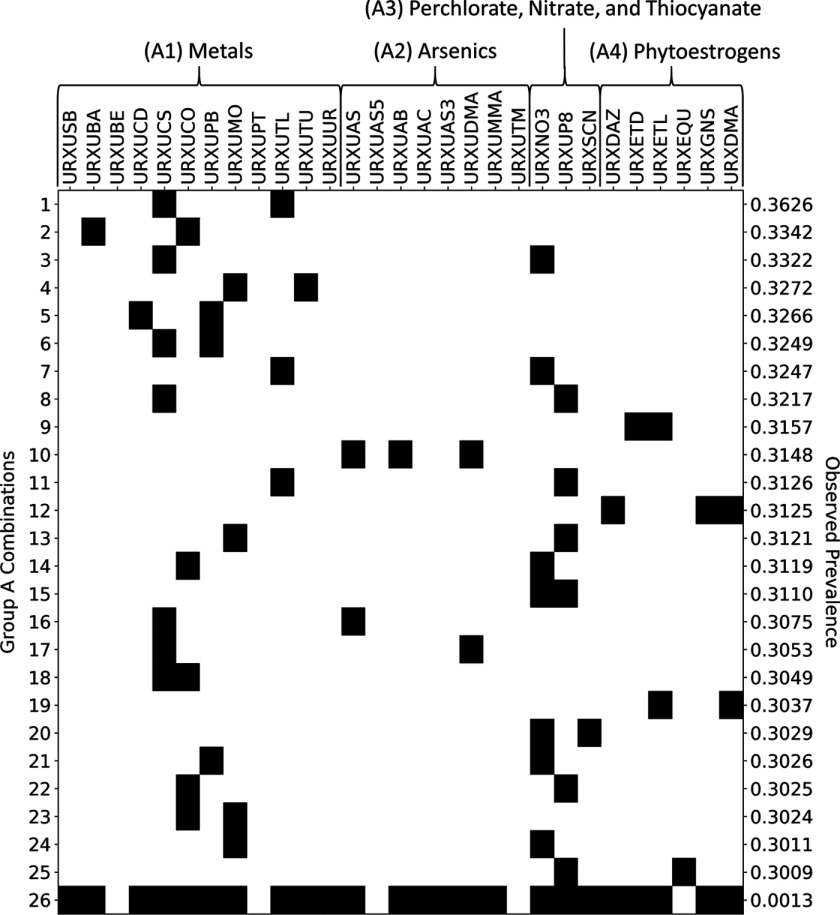Figure 5.
Presence–absence map (black indicates present) illustrating 25 maximal prevalent combinations of Group A chemicals (rows 1 through 25) and one supercombination consisting of 24 of the 29 chemicals in Group A (row 26). The maximal prevalent combinations were identified using frequent item set mining (FIM) with discretization thresholds set at the 50th percentiles and a minimum prevalence level of 30%. The supercombination occurred in 3 Subsample A subjects, representing a total of 324,107 (or 0.13%) of 258,281,689 represented U.S. residents. National Health and Nutrition Examination Survey (NHANES) codes along the top of the figure indicate Group A chemicals, and these are organized into subgroups A1, A2, A3, and A4. The observed prevalence number at the right of each row indicates the proportion of U.S. residents in which the given combination was observed to occur.

